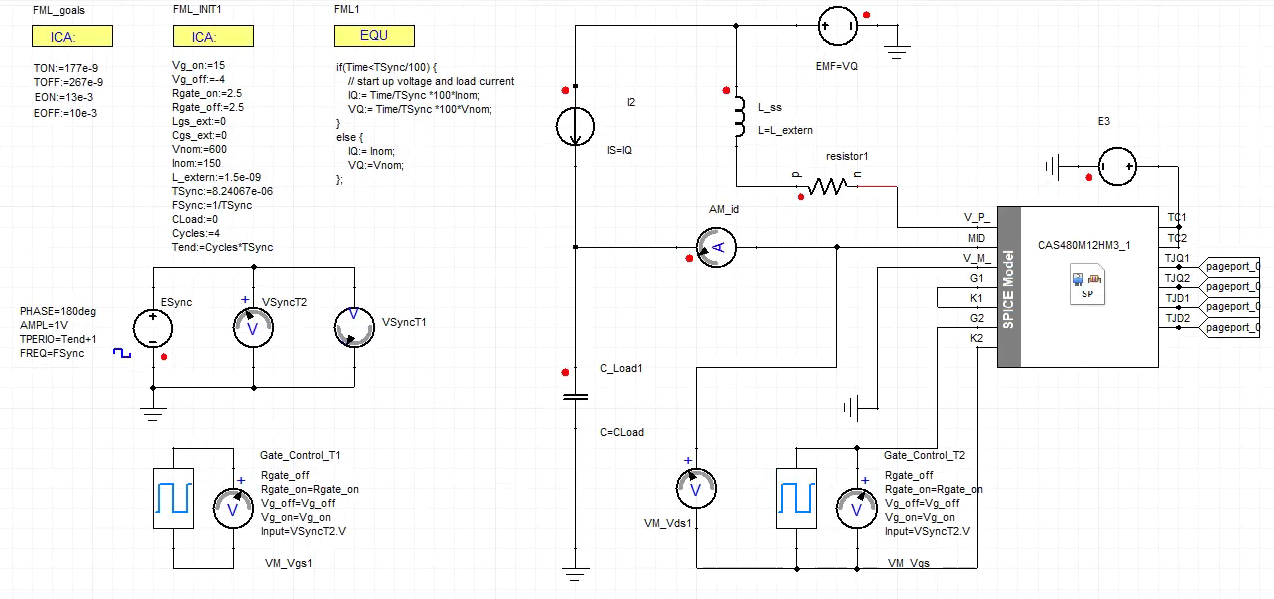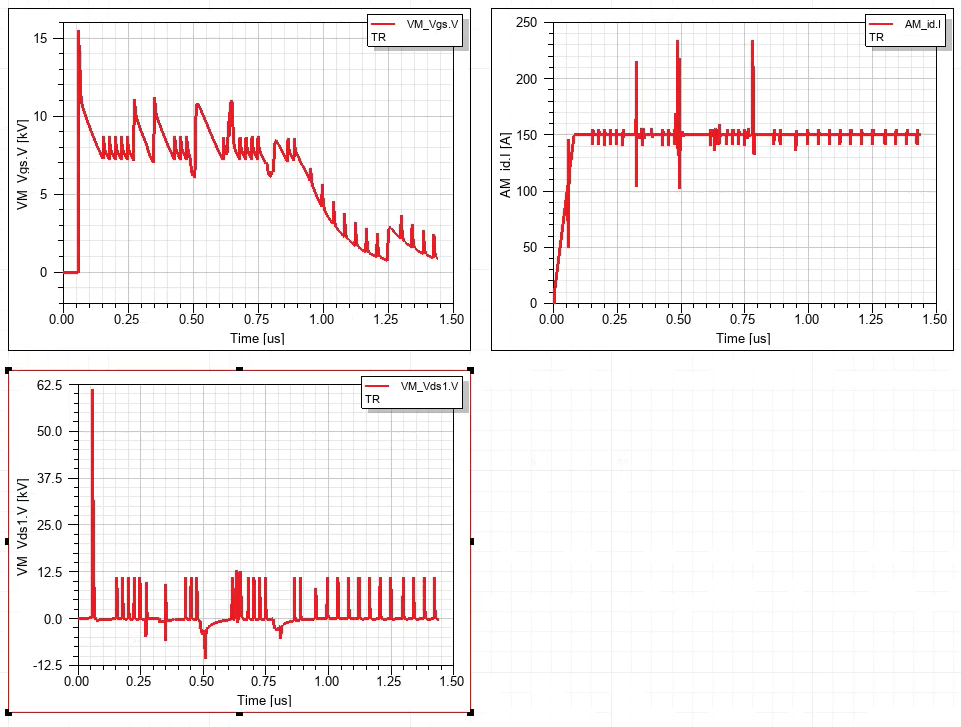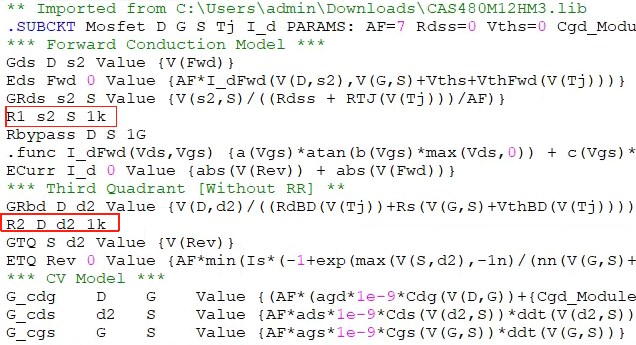CAS480M12HM3 SPICE
Dear Engineer,
Hello. I would like to consult two questions:
1. I downloaded the SPICE model of the CAS480M12HM3 module from the official website and imported it into ANSYS via the "Import Twin Builder Models" method. I then constructed a double-pulse test circuit for the CAS480M12HM3 module, as shown in Figure 1. However, the output results for Vgs, Id, and Vds (Figure 2) clearly deviate from practical expectations. I have thoroughly reviewed the code sections of the official model but cannot identify the source of the error. I hereby seek your guidance and would appreciate a response.
2. In the MOSFET module's code, there are 1kΩ resistors between s2 and S, and between D and d2 (illustrated in Figure 3). Could you kindly provide a simple schematic diagram indicating the positions of s2 and d2 within the MOSFET's internal structure?
Comments
-
Thank you for your post, it has been approved and we will respond as soon as possible.
0 -
Hi Emma,
I have faced this issue with ANSYS' SPICE solver in the past. I believe this is caused by the ddt() function that is not behaving as expected. There's not much I can do about that, unfortunately. As a test, you can try replacing G_cdg, G_cds, and G_cgs with regular capacitors to see if that solves the issue.
For your specific question, R1/R2 are simply there to help with convergence. They are in parallel with GRds and GRbd, which are always going to be on the order of mOhm. GRds/GRbd are just behavioral resistors implemented with a current source (I = V/R).
A few questions/comments:
- The LTspice models have been updated recently, you may try the latest versions to see if it helps
- Are you on the latest version of ANSYS? This might be fixed on later versions.
- Are you using Twinbuilder to develop an electrothermal model? That is, combining this SPICE sim with Icepak? If not, I recommend using LTspice.
Thanks,
Brian
0 -
Hi, I hope that this answered your question. If it did, please click on "This question has been answered - Close Discussion" . If you have a follow up question, at a later date, please "Start a New Discussion"
0



